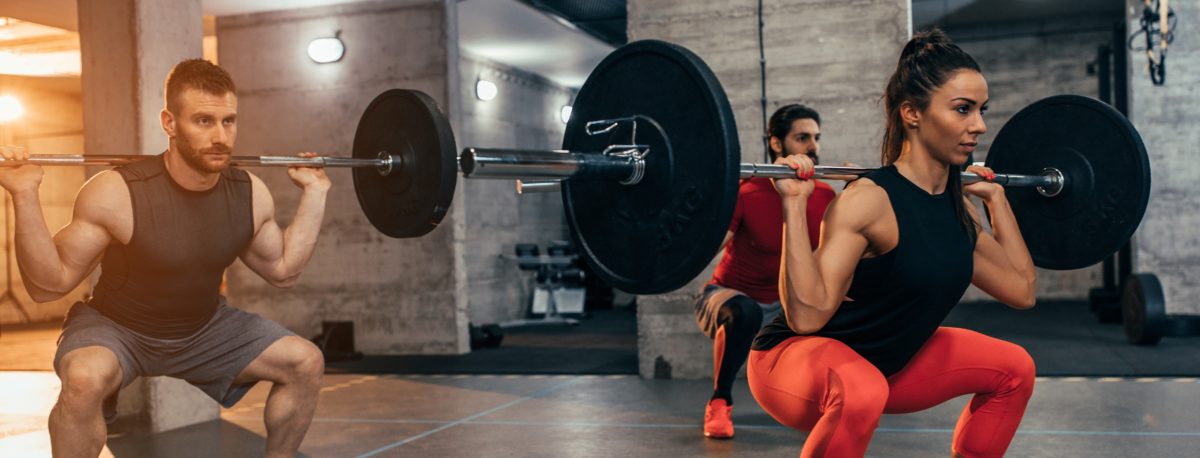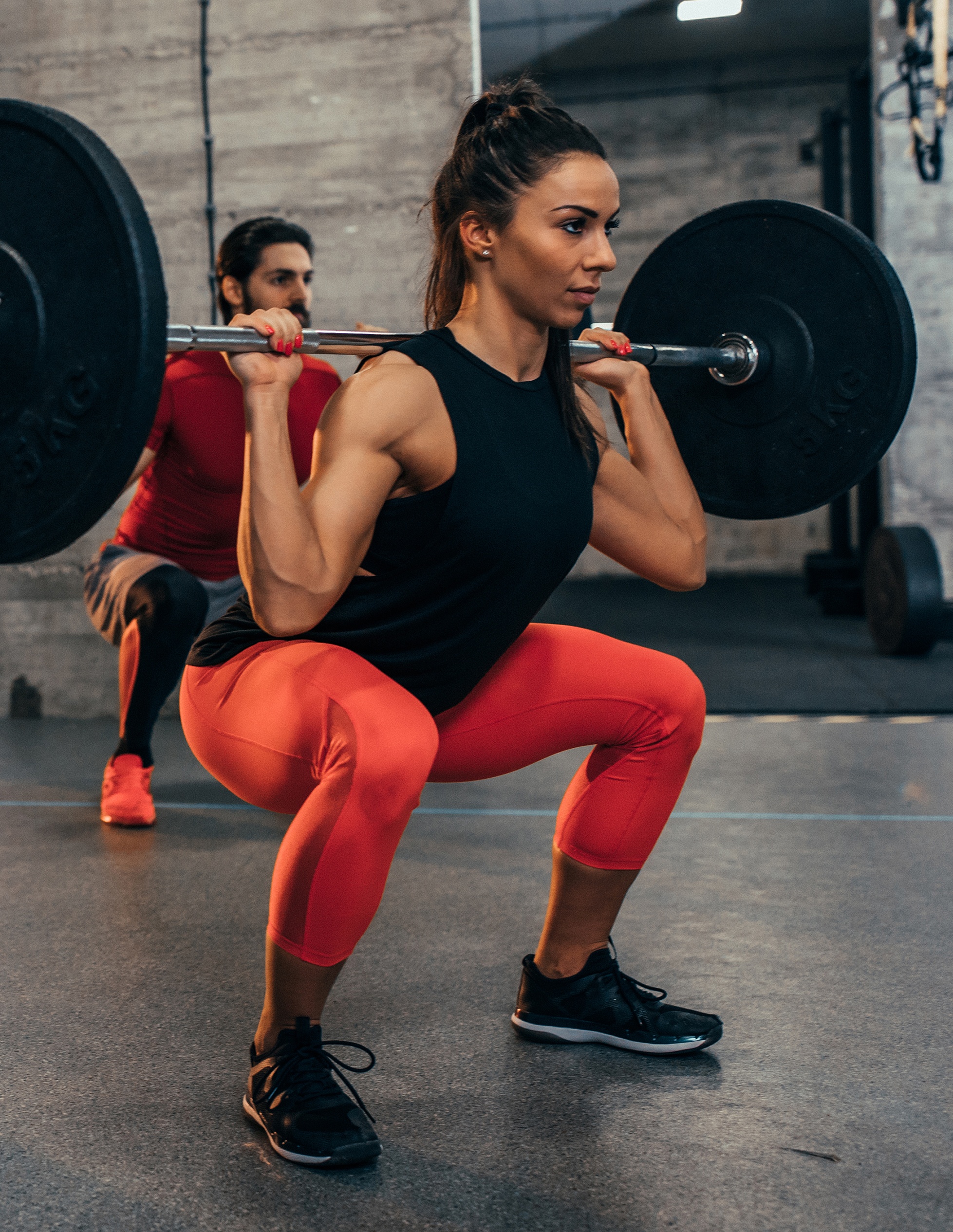Resistance Training: Benefits and How to Excel
Working up the courage to step into the gym is difficult but deciding to resistance-train once you’re there can feel downright impossible. With hundreds of different options, it’s no wonder that most people gravitate toward the treadmill. Despite the potential for confusion, resistance training (RT) is valuable and can provide benefits that other forms of exercise like cardio cannot.
Fortunately, getting started with RT is much easier than you’d expect. If you’re already experienced, however, there are also some steps you can take to ensure consistent and effective progress.
Resistance Training Helps Build Muscle and Strength
RT using weights and machines stresses your body and muscles in ways that cardio exercise will not. This is because the physical act of contracting your muscles under a load is a primary requirement for developing muscle size and strength. Increasing muscle size and strength is important because doing so can help you complete daily tasks with relative ease and help you maintain independence into older age.
Resistance Training Helps Build Strong Bones
An unfortunate side effect of growing old is a decline in bone health. Whether that’s due to a lack of activity or reduced hormone production, bone health declines with age and is often associated with a higher risk of fracture and reduced quality of life. RT provides the stress that bones need to grow, inhibiting decline. By using substantial amounts of resistance, you stress the bones of your body, which encourages them to grow stronger.
Resistance Training Can Help Keep the Pounds Off
Maintaining a healthy body weight is difficult in today’s age, but fortunately, RT can help. Research suggests that a higher level of muscle mass is associated with a higher metabolic rate, which could help reduce the accumulation of fat tissue. For maximum benefit, a combination of diet, RT, and cardiovascular training is suggested.
Getting Started
Don’t Overcomplicate Things
Instead of trying to use the latest and greatest techniques or pieces of equipment, start by keeping things simple. I recommend starting with exercises that focus on three principles: pushing, pulling, and legs.
For example, most “pushing” exercises like the chest press and overhead press will help you build your triceps, deltoids, and chest, while “pulling” exercises like the pull-up or row can help you develop your back, forearms, and biceps. Finally, most leg exercises like the squat, leg press, and deadlift can help you stimulate the quadriceps, hamstrings, and calves.
While experience might encourage more complexity in your workouts, keeping things simple in the beginning can help you develop a strong base for future improvement.
Stick with Dumbbells and Machines First
While free-weight exercises that use barbells are great for growth and development, they also require experience to use them safely and effectively. For a beginner, this can mean reduced growth and a higher chance of injury. Instead, try starting out with dumbbells and machines.
Dumbbells are an excellent option because they are a bit easier for the beginner and also come in various weights that are more appropriate when you’re first starting out. Machines also offer direct stimulation of target muscle groups, but they don’t require a high level of experience.
Try a Resistance Group Training Class
Group training classes are a fantastic idea, especially for the beginner. In addition to exercising with people who share the same fitness goals, you’ll also have the opportunity to learn from and work out with a professional leading the class. Plus, if you select a class focused on RT, you’ll gain an expert introduction into how to exercise safely and effectively. Bodypump, HIIT, and H.E.A.T. are designed to enhance muscular strength and endurance, speed, and agility, and most importantly, to change your body composition.
Ask Questions
Finally, LVAC has personal trainers on staff, and many of them love to answer questions. If you need help or just want to know if what you’re doing is right, try asking them to observe you or even give you a spot. Just remember, though, this is their job and how they make a living. If you require additional assistance, consider hiring them as a trainer for more personalized help and guidance.
Tips for the Seasoned Trainee
If you’re already committed to consistently exercising with resistance, there are a few tips you can use to potentially improve the effectiveness of your workouts:
Experiment with Exercises
Many people agree that certain exercises should be used, regardless of the goal. For instance, if you ask someone for a chest exercise, they’ll probably give you some variant of the chest press. For legs, you’ll undoubtedly hear about the squat or leg press. But even though these are the most popular and perhaps the most effective compound movements, there are hundreds of different exercises you can and should use.
One way to keep things fresh is to experiment with new exercises by imagining how the target muscle group works, and then brainstorm ways to add resistance. If you find that the exercise stimulates the target muscle well, consider adding it to your routine. If not, try a different exercise until you find one that works.
Try New Rep Ranges
As a trainer, I often see new gym patrons gravitate to the 10-rep range. While 10 is undoubtedly a good rep range for developing muscle and strength, it’s not the only one available. Try changing the rep ranges you use each time you exercise certain muscle groups. If you do the leg press for three sets of 10 repetitions for the first workout, try doing three sets of 20 the next time and then three sets of eight the following workout. In addition to varying rep ranges, you’ll also be forced to adjust the amount of resistance you use, which can help your body continue to progress as you become more experienced.
Follow Your Progress
Knowing how much progress you’ve made and what you need to do to continue progressing is integral to long-term success with RT. Especially for the experienced trainee, noticing a change over months or even years can be difficult without baseline metrics. If you care about making real progress, keep track of your workouts, your nutrition, and changes to your body composition. By doing so, you’ll be able to pinpoint exactly what works and what doesn’t work for you. If nothing else, you’ll gain a better understanding of how your body responds to various stressors.
Consider a Trainer
You might think hiring a trainer is only for beginners, but they can be valuable for any experience level. When a trainer works with a beginner, he or she needs to focus on teaching safe and effective exercises and habits, while ensuring a pleasant experience. When working with a more experienced individual, trainers can provide more detailed guidance and also push you to greater extents than you might push yourself. Even as a strength and conditioning specialist, I often turn to other trainers for help, guidance, and inspiration. Just because you have experience doesn’t mean you can’t afford to learn something new!
Call or visit one of our locations for more information.



